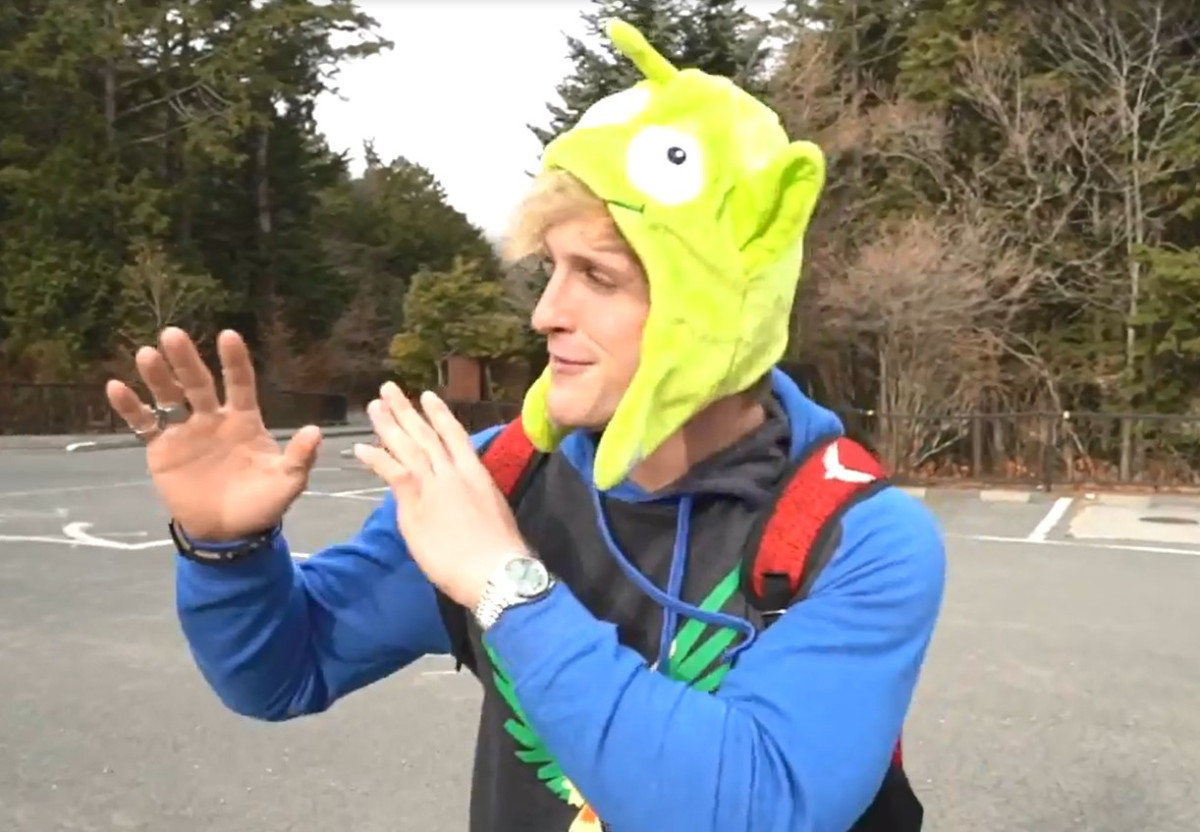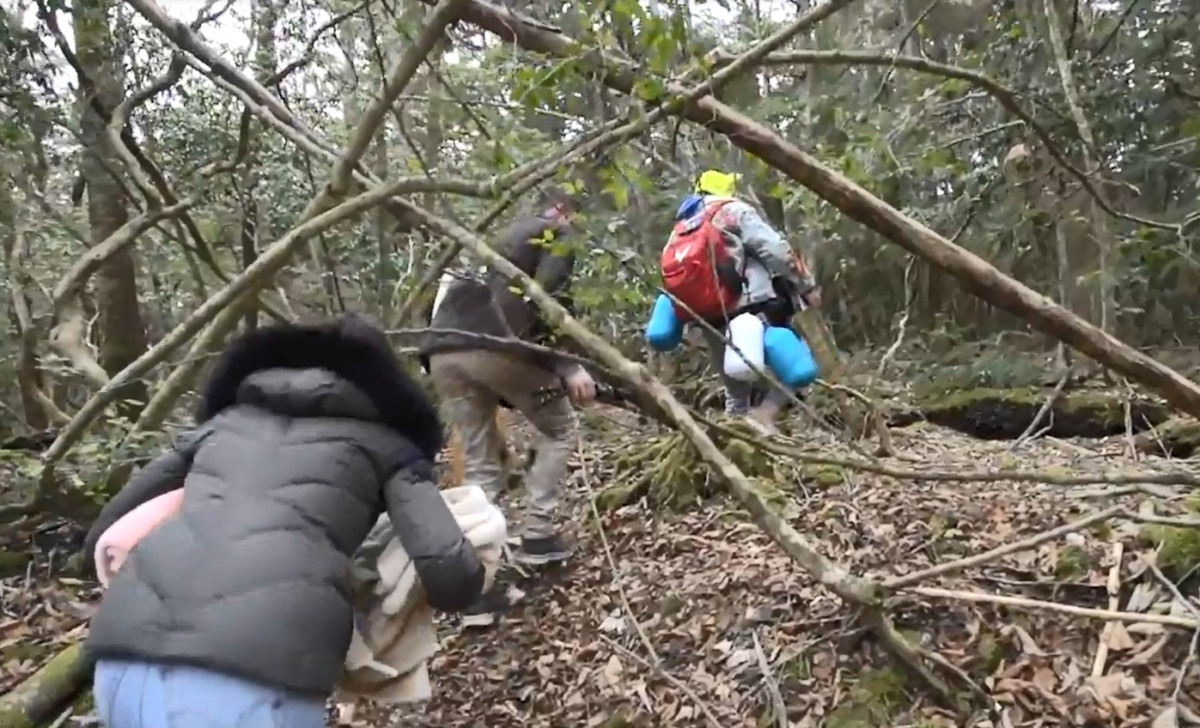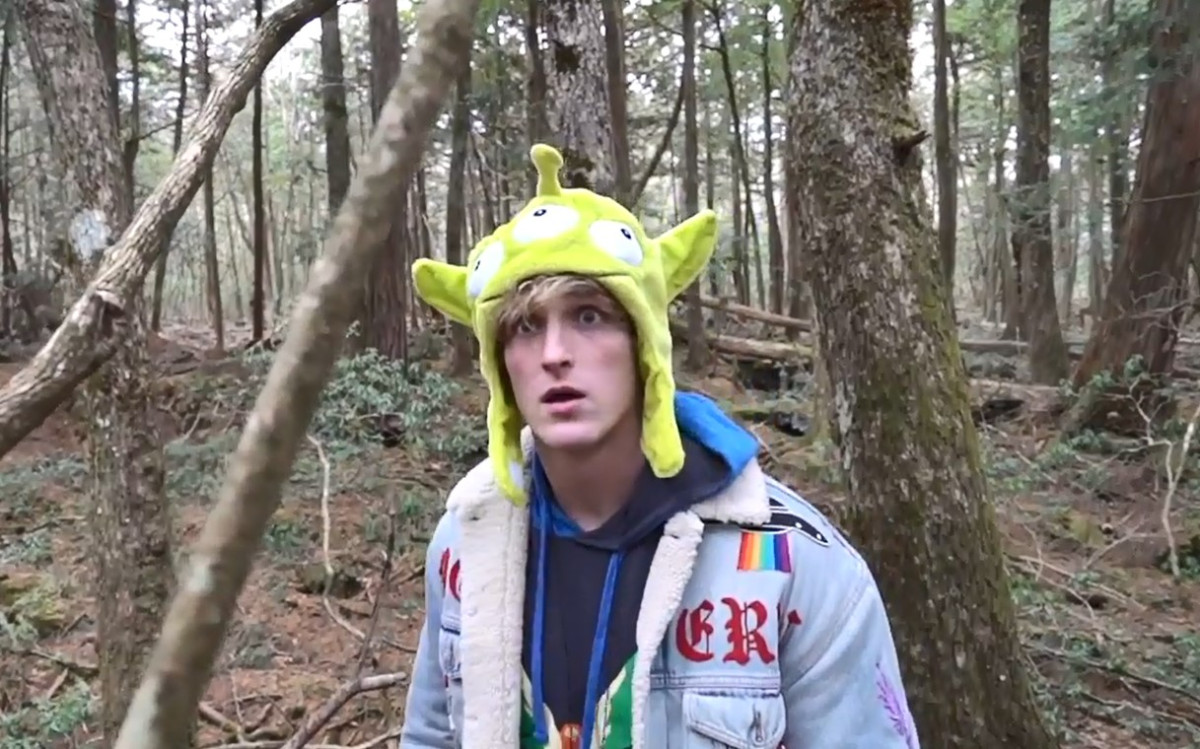Logan Paul Suicide Forest Video and Its Impact on Digital Media Ethics
In a controversial event that stirred widespread public outcry, Logan Paul, a prominent YouTube vlogger with millions of followers, faced severe backlash after posting a video that featured the body of an apparent suicide victim in Japan’s Aokigahara forest. Known for its unfortunate reputation as a common site for suicides, Aokigahara was visited by Paul and his team, who filmed and uploaded the video on December 31, sparking immediate criticism for its insensitive content.

The video quickly went viral, attracting millions of views and garnering intense scrutiny from media, mental health advocates, and viewers worldwide. Critics condemned the video for its disrespectful approach to such a serious and tragic topic. The backlash was not just limited to social media outrage; it had tangible repercussions affecting Paul’s business relationships and financial streams significantly.
Responding to the incident, YouTube took decisive action to distance itself from the controversy associated with one of its then-most popular creators. The platform removed Logan Paul’s channels from its Google Preferred program, a lucrative arrangement that allows top content creators to earn premium ad revenue. This program targets the top 5% of YouTube’s content producers, offering them enhanced visibility and financial benefits, which Paul lost as a result of the incident.
Additionally, YouTube placed a hold on all original projects planned with Paul. These steps by YouTube signaled a shift towards taking content regulation and creator conduct more seriously, acknowledging the platform’s role in promoting responsible content creation. This incident not only impacted Logan Paul’s career but also sparked a broader discussion on the ethical responsibilities of social media influencers and the platforms that host their content.
Contents
Background and Video Incident
Logan Paul, a prominent figure on YouTube, has been known for his boisterous and often controversial content that blends comedy, stunts, and reality-TV style vlogging. With a subscriber base exceeding 15 million, Paul’s videos consistently drew millions of views, making him one of the top content creators on the platform. His appeal was largely to a younger demographic, attracted by his energetic persona and boundary-pushing antics.
List of Logan Paul’s Deleted Videos
logan-paul-suicide-forest-video-1.mp4
logan-paul-suicide-forest-video-2.mp4
logan-paul-suicide-forest-video-3.mp4
logan-paul-suicide-forest-video-4.mp4
On December 31, Logan Paul uploaded a video that would spark global outrage and lead to serious repercussions for the vlogger. The video was shot in Aokigahara forest, located at the base of Mount Fuji in Japan, a place with a somber reputation as a frequent site of suicides. Known as the “suicide forest,” Aokigahara has been the subject of various documentaries and reports, which typically approach the topic with the gravity and respect it warrants. However, Paul’s video included footage of the body of a man who had apparently taken his own life, an action that was widely viewed as insensitive and disrespectful.
The video triggered an immediate and widespread backlash from viewers, mental health advocates, and the media. Critics accused Paul of exploiting a tragedy for views, highlighting a severe lapse in judgment. The incident not only sparked a conversation about the responsibilities of content creators but also about the voyeuristic nature of internet culture that could allow such content to gain traction initially.
Amidst the backlash, the significance of Aokigahara forest as a sensitive location was brought to the forefront. The forest’s association with suicide is well-known in Japan, and it is a place where many have gone to end their lives. Out of respect for those who have died and their families, discussions about the forest are usually handled with care, something that Paul’s video failed to do, leading to further condemnation.
YouTube’s Response
In response to the public outcry and the sensitive nature of the video, YouTube acted to sever some of its business ties with Logan Paul. Recognizing the need to uphold community standards and corporate responsibility, YouTube removed Paul’s channels from its Google Preferred program. This program groups the platform’s top content creators, offering them to advertisers as part of a premium package where ads are placed alongside high-quality, brand-safe content. Being part of this program not only boosts a creator’s earnings significantly through higher ad rates but also positions them favorably in the competitive ecosystem of digital content.

Furthermore, YouTube announced the suspension of all original projects with Paul. These projects, which included a sequel to his popular YouTube Red movie “The Thinning,” were put on indefinite hold. This decision was part of a broader move by YouTube to demonstrate its commitment to enforcing its content policies more strictly, especially following earlier criticisms of a perceived lack of enforcement.
The implications of these actions were significant for Paul, as participation in Google Preferred and YouTube’s original content initiatives are lucrative ventures for content creators. By removing him from these programs, YouTube not only penalized Paul financially but also sent a message to all content creators about the importance of adhering to ethical standards in content production. This decision marked a pivotal moment in how YouTube manages its relationship with creators, balancing the need for creative freedom with the responsibility to protect and respect its diverse global community.
Public and Media Reaction
The video posted by Logan Paul on December 31st immediately sparked a wave of public outrage and criticism due to its insensitivity towards the serious issue of suicide. The backlash was swift and severe, with viewers, mental health advocates, and media personalities condemning the decision to film and display a deceased individual’s body. Online comments flooded in, labeling the video as “disrespectful” and “disgusting,” questioning the morality and ethics of using such a scenario for entertainment.
Media outlets globally covered the story extensively, emphasizing the nature of the video and the location—Aokigahara forest, a site known for its tragic association with suicides. Coverage often pointed to the lack of respect shown to the victim and the broader issue of mental health. The incident sparked a larger debate on the responsibilities of social media influencers and the potential harms of chasing viral content without considering the ethical implications.
In response to the backlash, Logan Paul took to social media to apologize. His first apology came via Twitter, where he claimed the intention was to raise awareness for suicide prevention, a statement that many saw as an attempt to deflect criticism rather than express genuine remorse. Following continued outrage, Paul released a video apology, where he appeared visibly distressed, stating he had made a “mistake” and regretted his actions. This apology was met with mixed reactions; some accepted it as sincere, while others criticized it as a calculated move to salvage his image and career.
Financial and Career Implications for Paul
The consequences of the video had immediate financial and long-term career implications for Logan Paul. Initially, the fallout included being stripped of his privileged status in YouTube’s Google Preferred program, which significantly impacted his earning potential from ad revenue. This program had provided him with a higher rate of earnings per view by placing ads on his content from premium brands, which was no longer the case following the incident.

Despite these setbacks, Paul continued to earn income from the platform through regular YouTube views and his extensive merchandise line. His merchandise, which includes apparel and accessories branded with his logos and slogans, has been a substantial part of his income. His core fan base, largely composed of a younger demographic, remained loyal, which helped sustain his merchandise sales even during periods of intense public scrutiny.
However, the long-term effects on Paul’s career have been a subject of speculation. While he retained a significant portion of his fan base, his reputation within the wider community and potential for future partnerships with brands and other content creators was severely damaged. Brands typically shy away from associating with figures surrounded by controversy, particularly when it involves sensitive issues like mental health.
The incident also led to a more critical examination of Paul’s future projects. Any new ventures or expansions into traditional media and entertainment sectors might face increased scrutiny or hesitance from partners and stakeholders aware of his history of controversial actions. While Paul has attempted to rehabilitate his image through various means, including more sensitive content and public charity work, the long-lasting impact of the Aokigahara video lingers as a defining moment in his career.
Logan Paul’s incident in Aokigahara forest serves as a significant example of how digital influencers can face rapid shifts in their career trajectories based on their online actions. It underscores the importance of ethical considerations in content creation and the potentially steep consequences of neglecting them. For Paul, the incident was not only a major setback in terms of immediate financial losses and business relationships but also a stark reminder of the lasting implications such controversies can have on a public figure’s career.
Broader Ethical and Policy Questions
The incident involving Logan Paul at Aokigahara forest not only ignited public outrage but also highlighted significant ethical and policy challenges for YouTube and content creators at large. YouTube’s delayed response to the video, which remained online long enough to garner significant viewership, was a critical point of contention. This delay brought into question the platform’s content monitoring systems and policies, emphasizing the need for more proactive measures to identify and manage inappropriate content quickly.
The fundamental issue here involves the balance between rapid content dissemination and responsible content monitoring. YouTube, as a platform that sees hours of video uploaded every minute, faces immense challenges in content regulation. However, incidents like this underscore the importance of investing in more robust mechanisms, such as advanced algorithms and larger human review teams, to enforce community standards more effectively and protect sensitive content.
Furthermore, the incident raised questions about the ethical responsibilities of content creators. As influential figures with access to vast audiences, creators like Logan Paul bear a responsibility to consider the impact of their content. The ethical considerations involve understanding the boundaries of what is acceptable to share publicly, especially when dealing with sensitive subjects like mental health and suicide. Creators must navigate the fine line between raising awareness and exploiting delicate topics for views, which demands a deep understanding of and respect for the subjects they cover.
Reflecting on the role of social media platforms, it is clear that they play a crucial part in regulating content and maintaining community standards. Platforms must enforce policies that not only react to violations but also prevent harmful content from being shared. This involves setting clear guidelines and communicating them effectively to content creators, ensuring that the rules are understood and followed. Additionally, platforms need to engage in continuous dialogue with mental health experts and advocacy groups to refine their policies and respond adequately to evolving online behaviors.
The Logan Paul incident has profound implications for both the individual creator and the platform of YouTube. For Logan Paul, the immediate repercussions included a loss of business opportunities and a damaged public image, which had a lasting impact on his career trajectory. For YouTube, the incident was a wake-up call that highlighted gaps in their content monitoring processes and pushed the platform towards implementing stricter content regulations and monitoring practices.
The broader lessons for content creators and platforms involve recognizing the powerful impact of digital media and the responsibilities that come with it. Content creators are urged to consider the ethical implications of their work, especially when dealing with sensitive topics. They must understand that their content does not exist in a vacuum and can have real-world effects on their audience and the subjects they portray.
For platforms like YouTube, the incident reinforces the need for a balanced approach to content moderation, one that respects creative freedom while upholding ethical standards. As digital media continues to evolve, the challenge will be to maintain this balance, ensuring that the drive for engagement does not overshadow the responsibility to protect and respect all community members.
In conclusion, the Logan Paul controversy serves as a critical case study in the balance between creative freedom and ethical responsibility in digital media. It highlights the ongoing need for vigilance and ethical consideration from both creators and platforms, ensuring that the expansive power of digital media is used responsibly and with respect for all individuals.
Hot News -Sydney Thomas Video Spotlight on Her Rise to Fame
Dr. David Diffine Full Video and Unveiling the Controversy
Nurse Yahweh Video Leak and Its Impact on Digital Privacy
Dachi Ky Video Leak and A Deep Dive into Privacy Breaches
Msdami Video on Reddit and Its Implications for Online Privacy
Chris Sails Video Leak and Celebrity Culture
Subway Surfers Vienna video (U Bahn Surfer Wien Video)

